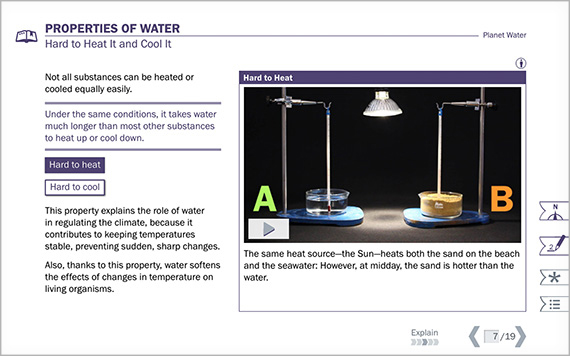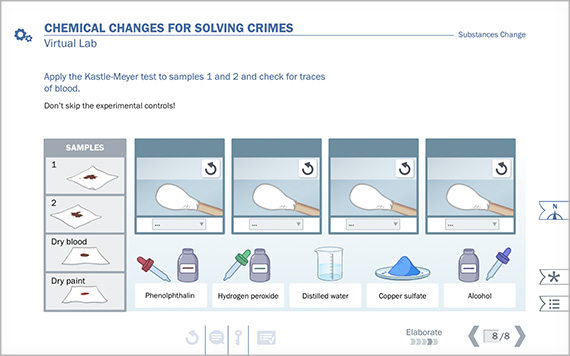An easy and effective way to
IMPLEMENT NGSS WITH THE 5E MODEL
SmartNGSS brings educational research on how people learn to your classroom through activities and lesson plans accurately designed to foster conceptual change and learning with understanding in all three of the NGSS dimensions..
- Every SmartNGSS lesson is clearly organized around a friendly 5E Instructional Model. What is the 5E Instructional Model?
- Learning objectives integrate Disciplinary Core Ideas, Crosscutting Concepts and Science and Engineering Practices through virtual and hands-on practices supported by interactive resources.
- The nature of science and research is integrated into every phase of a learning-by-doing approach to science learning.
- Complete key resources and activity guides are provided at every step to help teachers successfully implement the activities in their classes.
SmartNGSS’ 5E Instructional Model

Cover
This section includes a visual index of all 5E steps in the unit, learning goals, and an activity that tests students on the unit's prerequisites.

Engage
A motivating video presents a natural phenomenon in a familiar and meaningful context and then illustrates a problem or a puzzling event that students can't explain with their current ideas. Next, an activity about the video activates students' prior knowledge.

Explore
A guided inquiry-based activity challenges students' initial knowledge and conceptions and provides opportunities to resolve cognitive conflicts from the previous phase. Students investigate phenomena, discuss ideas and make connections. The teacher becomes a facilitator who listens, observes, and guides students to their understanding. In this stage we can find virtual experiments, interactive explorations, simulators, etc.

Explain
The Disciplinary Core Ideas and Crosscutting Concepts of the unit are formally presented in a systematic manner, using a wide range of multimedia resources. At this point, the ideas which have been both learned intuitively and through discovery are formalized and made universal. In addition, multiple activities introduce scientific practices in different contexts, such as analyzing and interpreting data, conducting research, and engaging in argument based on evidence. Videos, simulators, animations, interactive tables and graphs, etc. make scientific practices very easy to implement.

Elaborate
This stage includes a problem-based activity. This activity requires the application of concepts, attitudes, and procedures learned by the student in the unit, in order to solve a new problem in a new situation. Quite often, the solution to the problem requires de development of a complete technological project to be developed. Printable dossiers and rubrics are available for students and teachers.

Evaluate
To finish, the unit presents two highly valuable educational resources: one for review and the other for assessment. The first one includes a video which goes over the main concepts taught as the final revision of the unit, while the second one includes a final self-correcting test based on the principles of skills assessment. The test is not based on the evaluation of the students’ ability to learn concepts by heart, but on the practical application of the learned knowledge and procedures they have acquired.